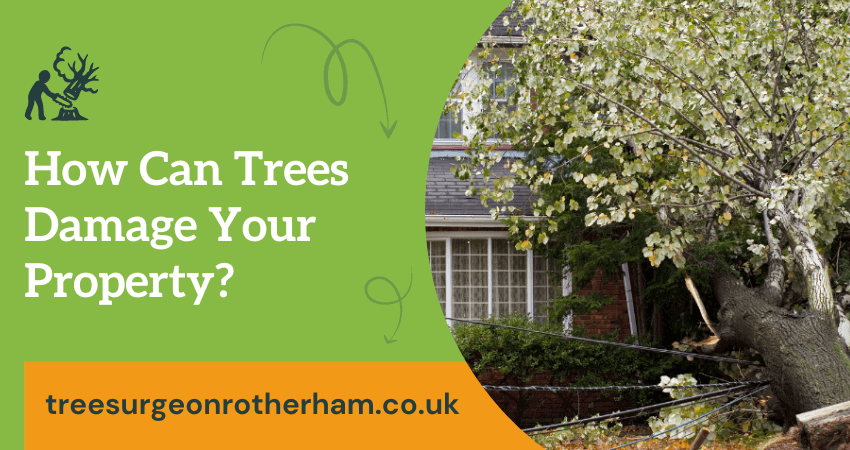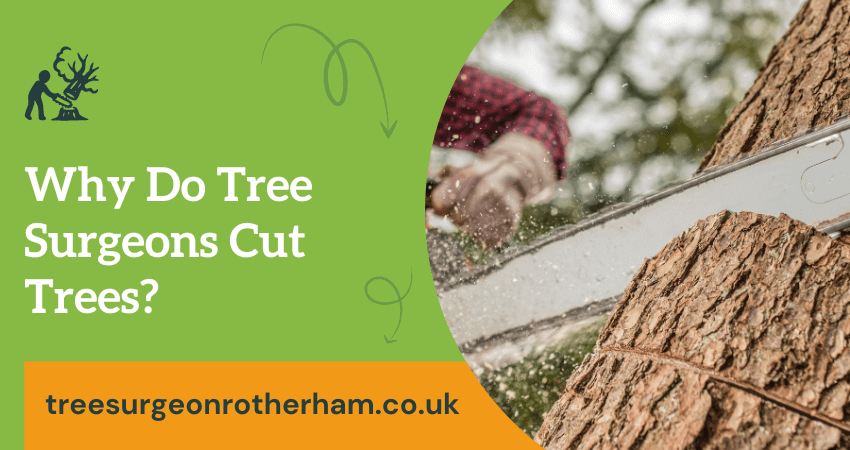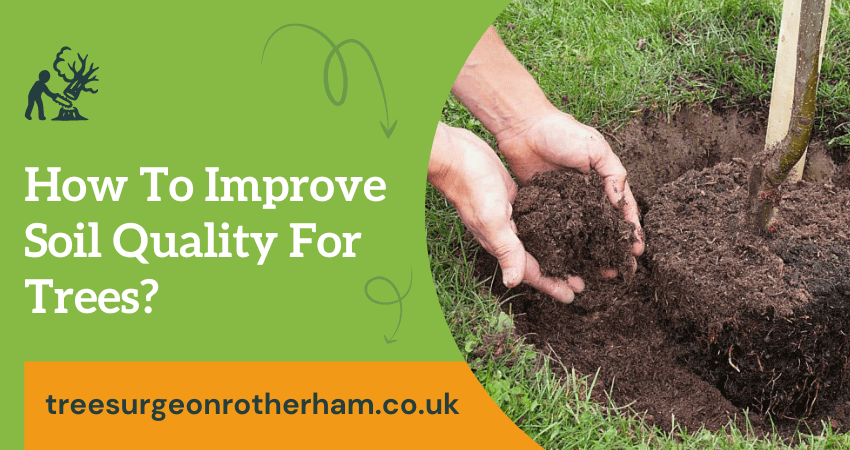Most people appreciate the beauty of trees and their place in the landscape, however, they may not realize that some trees can damage your property. Trees are a natural part of our environment, and their roots often spread far into the ground.
As these roots grow, they can dislodge or weaken walls and foundations, causing pavement or walkways to lift from underneath them and even break plumbing underground! This can have serious consequences for both residential homeowners and commercial businesses alike.
In this blog post, we will cover various types of tree root damage to property as well as prevention tips. Read on to learn more about how you can protect your home or business from potential tree-related disasters!
How trees damage your property?
Trees can cause extensive damage to your property if they are not properly managed. Trees can topple over and break through roofs, windows and walls when they are not adequately supported or pruned. High winds can cause weak branches to come down onto buildings, cars and other objects as well as potentially causing physical injuries.
Trees that are near power lines can cause outages and significant damage to your electrical system. It is important to inspect your trees regularly, prune them often and remove any dead limbs that may present a risk to minimize the potential for hazardous situations.
It is also important to understand how to use commands when dealing with trees. Many different commands can be used to manipulate and manage trees such as cutting, trimming and felling.
Knowing how to use these commands properly can help ensure that your trees are kept in good condition and minimize the risk of damage from falling limbs, roots or branches.
What are common ways trees can damage property?
Trees can cause damage to property in a variety of ways, such as uprooting and breaking foundations, blocking sewer lines, damaging roofs and scratching paint off buildings. Trees can also drop large branches onto homes and vehicles, causing significant destruction.
Additionally, roots can spread underground and break through concrete or asphalt surfaces, leading to costly repairs. Taking preventive measures such as trimming dangerous branches and roots, is important for preventing property damage from trees.
Trees should only be planted at a safe distance from buildings and other structures. If a tree is already near an area of your property, it’s important to consult with an arborist or landscaper to determine the best way to care for it to prevent any damage.
In addition to causing physical damage, trees can also be a potential fire hazard. Dead branches and leaves can accumulate and create a fuel source for fires, so keeping up with regular tree maintenance is important.
1) Root Damage
Root damage is a common problem in plants, caused by several factors such as soil compaction, disease, or insect activity. It can lead to stunted growth, poor plant vitality, and even death.
Causes of root damage: Root damage can be caused by a variety of factors, including excessive soil compaction, waterlogged soil, nematode infestations, flooding, and overfertilization. Additionally, soil fungus and bacteria can cause symptoms of root damage such as poor plant vitality and death.
Types of Damage: Root damage can be classified into two main types:
- Physical and biological. Physical root damage includes compaction, flooding, and soil erosion.
- Biological root damage can be caused by nematodes, fungi, and bacteria.
Prevention and Solutions: To prevent root damage, water and fertilize plants properly, avoid overfertilization and soil compaction, practice crop rotation to prevent nematode infestations, and use organic or biological pest control methods.
Additionally, regular soil testing can help detect signs of root damage before it becomes a serious problem. If root damage does occur, solutions such as proper fertilization, aeration, and replanting may be necessary to restore plant health.
2) Overhanging Branches
Overhanging branches can be a hazard to people and property. They can obstruct sidewalks, cause damage to buildings and vehicles, or even harm someone if they fall.
Dangers of overhanging branches: Overhanging branches can present significant risks to both people and the property surrounding them. Falling branches may be a potential hazard for anyone who comes into contact with the trees, as well as damage caused to nearby cars or buildings by any falling debris.
Furthermore, strong winds and storms can cause overhanging branches to snap or come loose, potentially causing serious damage or injury.
Damage caused by falling branches: Falling branches can cause significant damage to property and people, ranging from minor scratches and dents on cars to major structural damage to buildings. They may also cause serious injuries if they hit someone directly.
Maintenance and Safety Precautions: To prevent overhanging branches from becoming a hazard, regular maintenance and pruning should be done to ensure that trees are properly trimmed.
Additionally, safety equipment such as hard hats, gloves, eye protection, and sturdy shoes should be worn when working with or near trees to protect against potential hazards.
3) Structural Damage
Structural damage can be caused by the heavy weight of trees and their roots, which may put pressure on foundations or other structures. Trees can also contribute to the erosion of soil, causing further damage.
Heavy Weight of Trees: The weight of trees can put a great deal of stress on a structure’s foundation and walls. Their heavy branches can cause further damage by putting pressure on roofs or siding, while their roots may cause cracking in concrete or asphalt when they grow too close to the surface.
Types of Damage Caused by Trees: Trees can cause both physical and structural damage. Physical damage may include broken windows or siding, while structural damage can be more serious, such as cracks in walls or foundations and even collapsed roofs.
Importance of Regular Tree Maintenance: Regular tree maintenance is essential for protecting property from damage caused by trees. Pruning should be done to ensure that branches are kept away from buildings, and in some cases, professional tree trimming may be necessary to reduce the risk of falling branches.
Additionally, regular inspections are important to identify any potential problems before they become serious issues.
Wrap Up
Although trees are known for their beauty and benefits, they can also cause some serious damage to your property if they’re not properly cared for. Overgrown or dead branches can fall and cause damage to your home, or car or even injure you or someone else.
If you have trees on your property, be sure to have them regularly inspected by a professional and take care of any problem areas before they become bigger problems.




